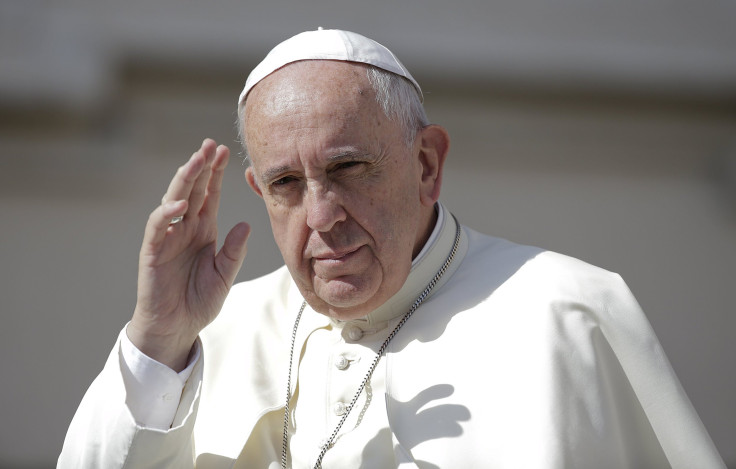Pope Francis Climate Change Encyclical: Latin Left By The Wayside As 'Laudato Si' Seeks Broader Audience, Accessibility

Pope Francis’ newly released encyclical on climate change is a radical departure from previous papal encyclicals not only for its bold environmental stance, but also because of its language. Written in a plain, everyday Italian, the highly anticipated text is one of the few encyclicals to have been published in a language other than Latin, in what experts say represents the popular pontiff’s attempt to shift how the Roman Catholic Church addresses its flock and to make its message as widely received as possible.
The language of the encyclical is “extremely accessible,” said Karl Appuhn, an associate professor of Italian studies and history at New York University. “The fact that it's written not in this formal high Latin style but in Italian fits perfectly well with [Francis’] self-presentation as the pope of the people rather than, let’s say, the formal, autocratic style of his predecessors.”
Papal encyclicals have, with a few exceptions, traditionally been published in Latin, the official language of the Catholic Church. Often, the texts are addressed to the church hierarchy, including bishops of particular countries. Francis’ text, on the other hand, is written in a “colloquial style considerably different from the encyclicals of the pope’s predecessors,” Benedict XVI and John Paul II, said the Rev. James Bretzke, a professor of moral theology at Boston College.
“Their encyclicals were written in a rather abstract genre,” Bretzke said. “The average person in the pews would have been bored.” Francis’ encyclical, on the other hand, “is something that the average educated person can pick up and read through easily.”
Francis’ effort to expand the audience of his text beyond that of traditional encyclicals is also underscored by its title, “Laudato Si,” or “Praised be,” a reference to the “Canticle of the Sun,” a popular early Italian poem by St. Francis of Assisi. The saint, whose name the pope took as his own, is known among the Catholic faithful for his love of nature and animals.
“Out of all of the Catholic saints, [St. Francis] has always been seen as the one with the strongest connection to nature,” Appuhn said. “That’s going to be the first thing that pops into everyone’s mind and, in general in all Catholic communities around the world, it’s going to have a meaning that won’t require a huge amount of interpretation and exegesis.”
The thematic correspondence to Francis’ environmental message calling for urgent action on climate change will be readily apparent to most Catholics, but there’s also a deeper linguistic resonance to referencing this particular text for Italians in particular. Many Italian children first encounter the Canticle of the Sun in school, where it is typically assigned because of its significance as one of the earliest pieces of literature written in the vernacular.
St. Francis' poem, which is thought to have been written in the year 1224, is widely recognized as one of the first works of literature to have been published in the Umbrian dialect of the developing Italian language, as opposed to Latin.
“He’s saying, no, this is not going to be a Latin title,” Bretzke said. “He’s not quoting a pope, a doctor of the church, or even Thomas Aquinas. He’s quoting a piece by a non-cleric. St. Francis of Assisi was a saint, not a priest. … He probably picked the one saint that has the greatest name recognition value and popular appeal.”
The significance of this text is just another of the ways Francis has presented his papacy as one focused on ministering to his flock rather than simply continuing the insular politics of the church. “It fits, more or less, from the way Francis is presented as wanting to bring the church closer to the Catholic community,” Appuhn said. “He wants the papacy to be accessible to the average Catholic.”
© Copyright IBTimes 2024. All rights reserved.






















